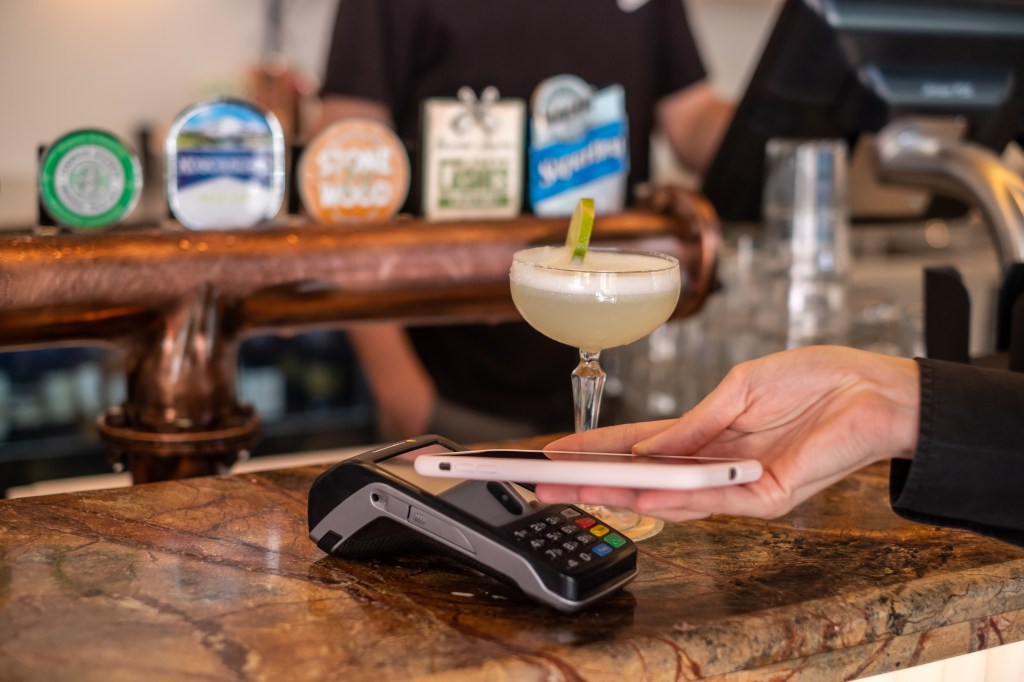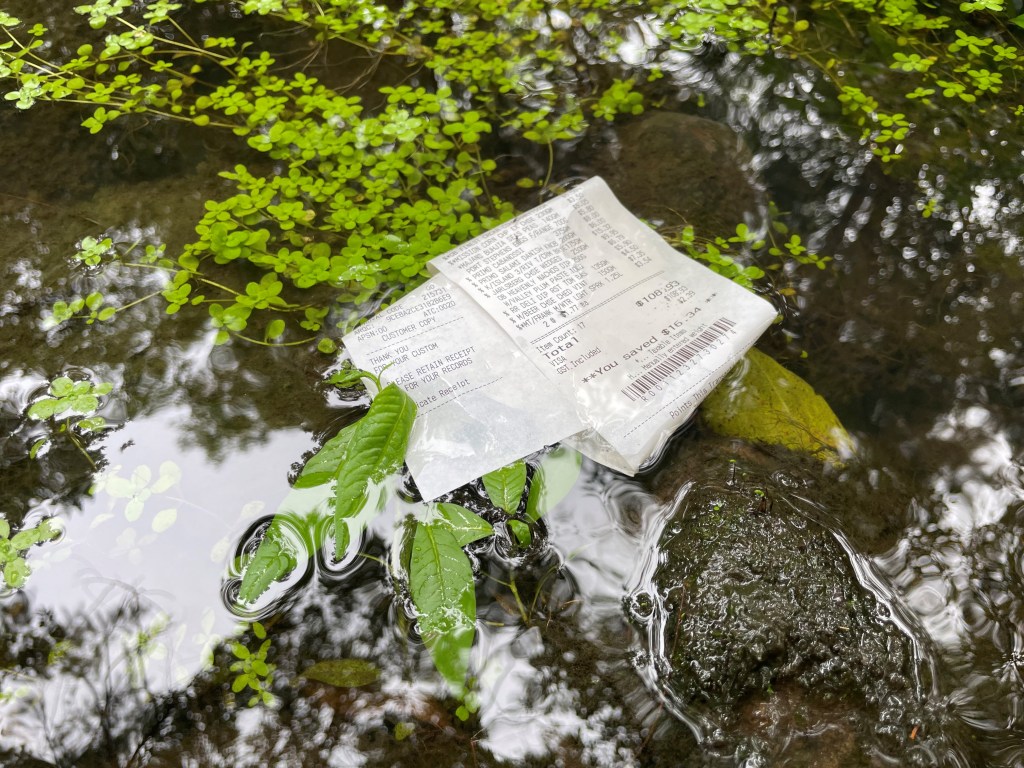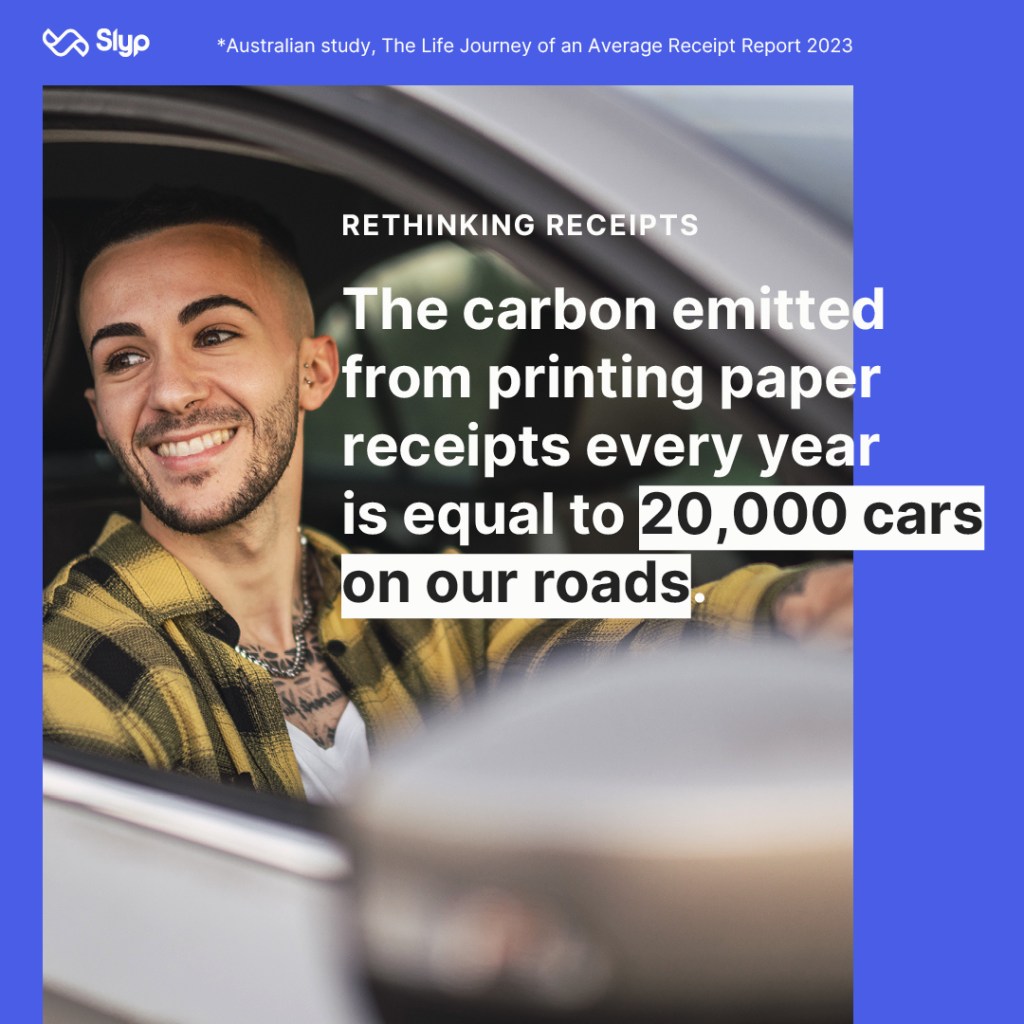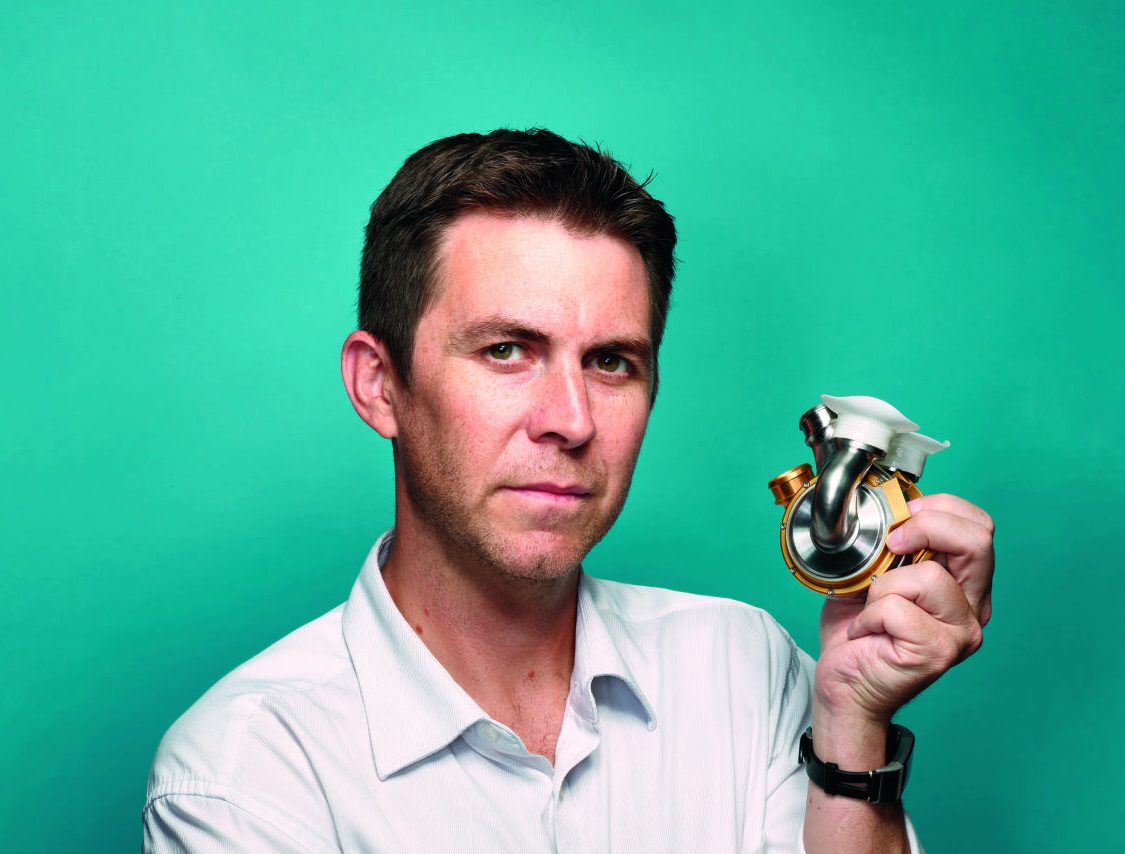A 50cm-long paper receipt for a power tool prompted Paul Weingarth to found digital receipts company Slyp in 2016. Now, he’s got the University of Technology, Sydney to produce a lifecycle analysis of the true cost of the 10.6 billion receipts handed to Australians each year.

Key Takeaways
- An estimated 10.656 billion paper receipts are produced in Australia each year, which required:
- 150,462 trees chopped down
- 1,562,000,000 litres of water
- 96,227 metric tonnes of carbon emissions, equivalent to 21,000 cars
- 104.746 million kilowatts of energy, enough to power 18,500 homes for a year and equivalent to a large regional city
- On the other hand, the same number of digital receipts would:
- Require no trees or water
- Generate 3,037 metric tonnes of carbon, equivalent to 660 cars
- Use 7.193 million kilowatts of energy, enough to power 1,270 homes
Paul Weingarth was a self-described “payments nerd” – paying through his watch on the fateful day in 2016 when he went to buy a drill and got a paper receipt as long as his arm. “I thought, ‘This is crazy.’ Payments have become much smarter and digitised, but that last mile of transaction has been left behind.”
As if to drive home the point, the hardware store cashier recommended he take a photo of the receipt because the drill had a six-year warranty and a paper receipt wouldn’t last.
“It’s gone from digital to paperback to digital … so there’s got to be a better way. I mean, we’re moving towards a cashless society and everyone’s tapping their cards, their phones and watches to make payments. How can we bring these receipts into the smart world?”
He co-founded Slyp in 2016 with PayPal colleague Spiro Rokos along with Mike Boyd from ANZ’s data team. They have since managed to get on board with all four major banks.

In 2022 Slyp commissioned a team from UTS to conduct research into paper receipts, looking at their lifecycle emissions and resource use, but also their disposal and the potential toxicity in the chemicals used to make them printable.
The results, The Life Journey of an Average Receipt, was published today, time to coincide with the announcement of a collaboration – FutureProof – to try to take paper receipts out of the economic ecosystem. Organisations present at the FutureProof kick-off meeting included: Australian Payments Network, Australian Retailers Association, Chemist Warehouse, Consumers’ Federation of Australia, Council of Small Business Organisations Australia, Google, NAB, Scentre Group, Slyp, The Volte, UTS, Visa and Woolworths Group.
Background
Thermal paper is coated with a chemical that changes colour when exposed to heat so ink is not needed for printing. Thermal printers are cheap and light, perfect for cash registers and credit card terminals.
The health and ecological impacts of thermal paper receipts have for years been called into question because the paper contained Bisphenol A (BPA) or similar substances which had been found to mimic human hormones and so affect health. BPA has been banned in Europe and many US states, but its substitutes have not been well studied. In Australia, there has been a “voluntary” move away from it.
The UTS study
The paper industry claimed in interviews with the UTS researchers that their supply chain was BPA-free and that most Australian manufacturers of thermal paper get their bulk supplies from Europe, where BPA is banned.
But the researchers said the evidence was opaque. “Our study is inconclusive about which thermal paper roll supply chains contain BPA (or other phenol components such as BPS) due to a lack of regulation and poor labelling on thermal paper roll products.”
The research paper says there is a “a critical knowledge gap” about BPAs in Australia. “The few Australian studies which do exist have found that most of the thermal paper in Australia (more than 80%) use BPA, with BPS and other phenol derivatives accounting for the rest of the market.”
The researchers also conducted an experiment where they put thermal paper from two major wholesalers – with no labelling about composition – into various environments to replicate the downstream effects of landfills. BPA is known to leach from landfills. They picked up “no obvious concentration of BPA,” but found there were changes in the chemistry of the aquatic environments, showing that thermal paper waste did “have an impact on natural ecologies which could be explored in further research”.

The researchers noted that while BPA has been removed from European paper, little is known about the effects of the chemicals that might be being used to replace it, such as the closely related BPS.
Three-quarters of the BPA found in European people’s bloodstream, got there because of thermal paper, the European Food Safety Authority has found. BPA is best known as a hormone disruptor in humans and animals. The risk to pregnant women and children caused a push to remove it from plastic drinking water bottles.
A 2020 study showed a 49% increase in all-cause mortality in those with the highest BPA blood levels from a group of 3,883 adults studied over a median of 9.6 years.
Weingarth said that not only was BPA harmful for humans to touch, “but it also makes them [receipts] non-recyclable when it comes to end of life,” so there were “wins across the board” if paper could be removed from transactions.

So he’s been part of a group of companies which yesterday launched the Future Proof collaboration to work towards removing paper receipts from the economic ecosystem.
“It’s just about building industry-wide collaboration … to bring together a range of different partners from banks to industry bodies, retailers, big tech companies like Google, into the conversation to drive awareness and to affect change in the industry.”
“Receipts are a key part of the transaction exchange between a buyer and a seller. However, printing and handling paper does not align with the way we as consumers make purchases. Today, almost 40% of Australians have stopped carrying a physical wallet or card and instead rely on their smart devices to complete payments. By switching to a digital-first mindset, we can create a transaction experience that’s not only more convenient for the customer but also more environmentally friendly for our planet.”


